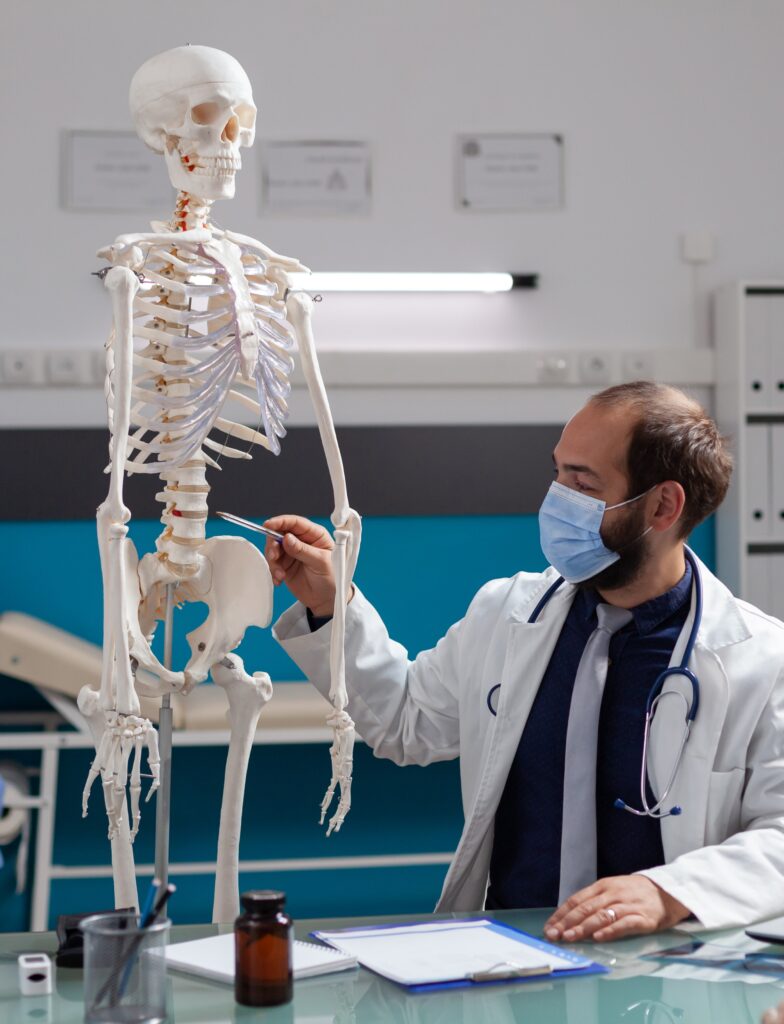Welcome to Osteoscan
Osteoscan, founded over 30 years ago by two of Adelaide’s leading endocrinologists, has already scanned more than 50,000 patients for osteoporosis and offers itself as your partner in fracture prevention.

Who we are?
We provide high-quality DEXA scanning by dedicated technicians using the latest generation of hardware and software. Additionally, all reporting is performed by experienced clinicians who incorporate both DEXA data and clinical information into an integrated report, which includes calculation of estimated future fracture risks. Reports can be delivered directly to your medical records software, in paper format, or both. Patients have the convenience of choosing from our 3 locations.
Our services

DEXA Scanning Services
Bone densitometry by dual energy X-ray absorptiometry (DEXA) of the hip and spine is the ‘gold standard’ test for diagnosing osteoporosis and monitoring the response to treatment.

Vertebral Fracture Assessment
used to screen for undiagnosed vertebral fracture. This service is conveniently performed at the same time as a Bone Mineral Density (BMD) scan and uses low radiation dose DEXA, unlike a spinal X-ray.

Fasting Serum Crosslaps
determines how fast a patient is losing bone mass and if the current treatment is working effectively.

Whole Body Scanning
If you are interested in weight loss or fitness Whole Body Scanning is the gold standard in defining and measuring body mass, muscle mass and fat percentages. It can be used as a method of monitoring the efficacy of a program of exercises or weight loss.

What is osteoporosis?
Osteo’ means bone and ‘porosis’ means porous.
Osteoporosis is a bone disease where the structure of our bones becomes fragile and brittle due to loss of crucial minerals, such as calcium. Our bones then crush and easily break.
Osteoporosis often does not cause pain, and the first sign of the condition can be a broken bone.
Information for
Patients
Information for
Practitioners

Research Trials
Osteoscan has been involved for many years in clinical research trials. Ostescan has provided scanning services to many leading research organisations undertaking research and clinical trial for many large pharmaceutical companies.
Work Description
- Testing the Bone Mineral Density of groups of volunteers
- Volunteers agreeing to take either the trial drug or a placebo
- Evaluating the efficacy and safety of the drug
- Determining suitability for patient use based on the gathered data
Trial Monitoring
- The resulting scans are sent to an appropriate international monitoring company.
- The monitoring company is responsible for the maintenance of the high-quality work throughout the trial.
- The volunteers are tested several times during the trial.
Impact and Results
- It has been very gratifying to be a part of this process.
- Several new treatments have been approved for the public's use as a result of this work.
Technical Staff Approval
- Our technical staff have to be specially approved for this work.
FAQ
Roughly speaking, men are considered “ten years behind” women in terms of the risk of fragility fractures.
The risk of fragility fractures in women is higher compared to men. Approximately two out of three women will experience a fragility fracture during their lifetime, whereas the risk for men is lower, with about one out of three men experiencing a fragility fracture.
Similar to women, various treatments are available for men to address fragility fractures and osteoporosis. These treatments may include lifestyle modifications, exercise programs, dietary adjustments, calcium and vitamin D supplementation, and medication options such as bisphosphonates or denosumab.
Few studies are performed on men. It is easier to recruit women to studies in large numbers (more women are interested; more of them attend osteoporosis screening or menopause clinics). It is expensive for manufacturers to sponsor duplicate studies of men and women.
Although there appears to be no difference in bone biology between the sexes, the PBS (federal government department which subsidises medications) will not subsidise medicines for men when the effectiveness and the safety have not been separately confirmed in men.
Twenty years ago, a group of male Canberra residents brought a successful action against the PBS for discrimination on the grounds of sex. The medication was for osteoporosis – but one that we rarely use now.
At present, men can still take the same medication as women, but must pay the full price without government subsidy.
There is only one medicine that actually increases the amount of bone. This is teriparatide (trade name Forteo). To take this treatment, you need to inject yourself every day. It is very expensive. The Pharmaceutical Benefit Service only subsidises it for people with exceptionally fragile bones.
